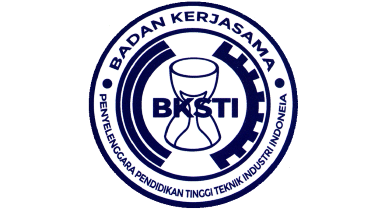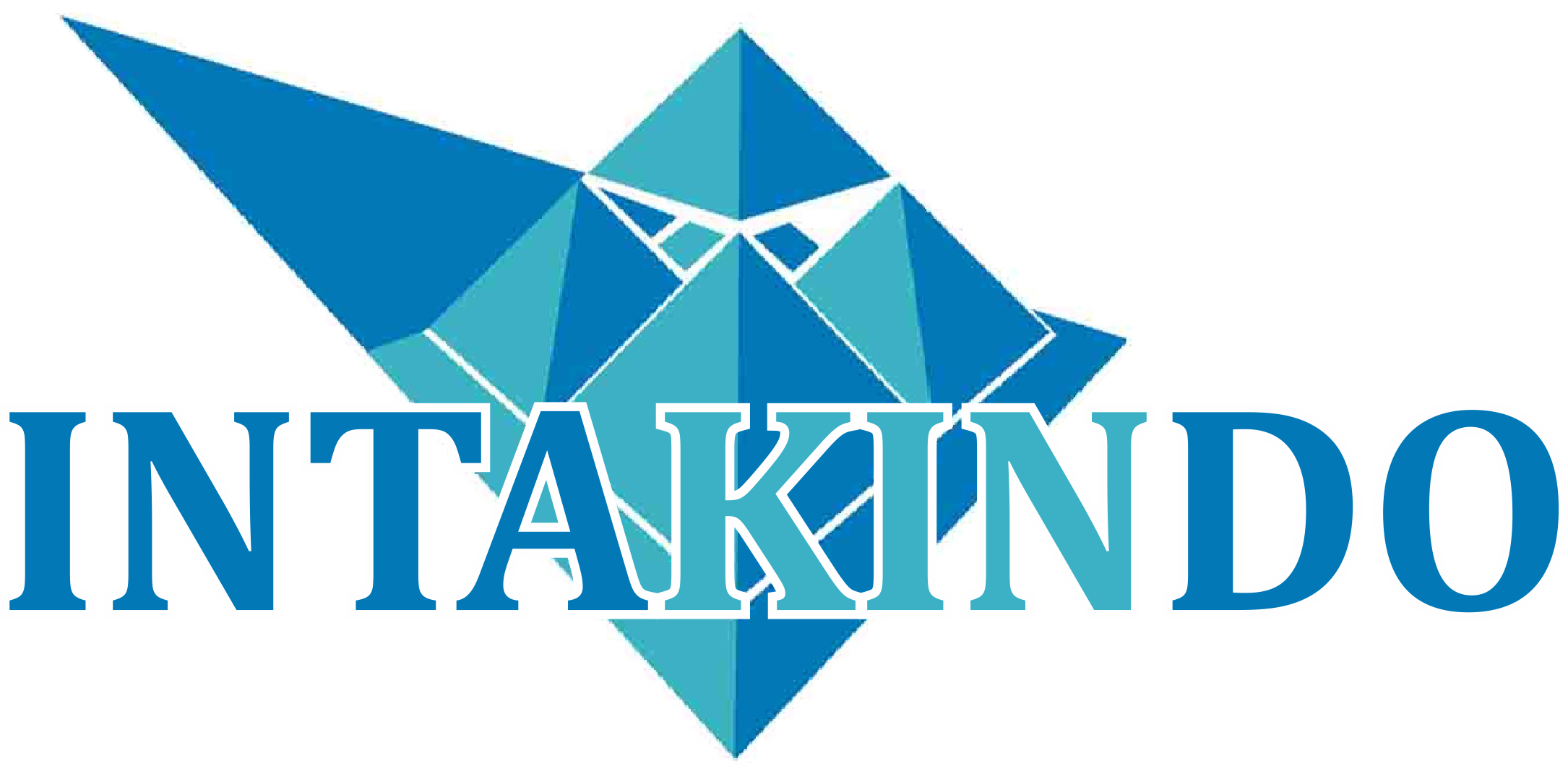Hubungan Stres Kerja dan Cedera Otot dengan Produktivitas Tenaga Kerja pada Industri Tahu
DOI:
https://doi.org/10.30737/jatiunik.v3i2.845Keywords:
Asymp.Sig, Chi-Square, Job Stress, Muscle Injuries, Purposive SamplingAbstract
In the activities of the tofu industry will be associated with muscle injury and work stress on labor productivity. In this case needed a way to find out how big the relationship between work stress with work productivity and muscle injury with worker productivity in the tofu industry. Research conducted with the population is tofu industry in Kediri Regency using non-probability sampling with purposive sampling technique. From this sample, 17 respondents were identified as having experienced work stress and injuries due to ordering excess tofu with duration <14 days and age of workers> 20 years to <80 years. Distributing questionnaires to respondents was then carried out the relationship test that is Chi-Square Test. From these tests the results obtained in accordance with the hypothesis on work stress have a relationship with productivity that is worth Asymp. The work stress variable of 0,000 has reached the value of 0,000 <0.05 and the productivity variable is 0.002 <0.05. Whereas in muscle injury with work productivity Asymp value. The work stress variable of 0,000 has reached the value of 0,000 <0.05 and the productivity variable is 0.002 <0.05
Â
Didalam kegiatan industri tahu akan berkaitan dengan cedera otot dan stress kerja terhadap produktivitas tenaga kerjanya. Dalam hal ini diperlukan cara untuk mengetahui seberapa besar hubungan pada stress kerja dengan produktivitas kerja dan cedera otot dengan produktivitas pekerja pada industri tahu tersebut. Dilakukan penelitian dengan populasi adalah industri tahu di Kabupaten Kediri menggunakan non-probability sampling dengan teknik purposive sampling. Dari sampel tersebut didapatkan responden sejumlah 17 orang dengan kriteria pernah mengalami stress kerja dan cedera akibat pemesanan tahu yang berlebih dengan durasi < 14 hari dan usia pekerja >20 tahun sampai < 80 tahun. Dilakukan penyebaran kuisioner kepada responden kemudian dilakukan uji hubungan yaitu Uji Chi-Square. Dari uji tersebut didapatkan hasil sesuai dengan hipotesis pada stress kerja memiliki hubungan dengan produktivitas yang bernilai Asymp. Sig variabel stress kerja sebesar 0,000 sudah mencapai nilai 0,000 < 0,05 dan variabel produktivitas sebesar 0,002 < 0,05. Sedangkan pada cedera otot dengan produktivitas kerja nilai Asymp. Sig variabel stress kerja sebesar 0,000 sudah mencapai nilai 0,000 < 0,05 dan variabel produktivitas sebesar 0,002 < 0,05.
Â
References
Bekraf, “Kegiatan BEKRAF dan BPS Rilis Buku Statistik Ekonomi Kreatif,†bekraf.go.id. .
UKMIndonesia, “Potret UMKM Indonesia : Si Kecil yang Berperan Besar,†https://www.ukmindonesia.id/, 2019. [Online]. Available: https://www.ukmindonesia.id/. [Accessed: 19-Jan-2019].
M. by Mekar, “Perbedaan UMKM Perkembangannya di Indonesia,†jurnal.id, 2017. [Online]. Available: https://www.jurnal.id/id/blog/2017-perbedaan-umkm-perkembangannya-di-indonesia/. [Accessed: 17-Jan-2020].
Supriyanto, “Pemberdayaan Usaha Mikro, Kecil dan Menengah (UMKM) Sebagai Salah Satu Upaya Penanggulangan Kemiskinan,†J. Ekon. dan Pendidik., vol. 3, no. 1, pp. 1–16, 2012.
T. K. Rohmah, “Miris! Serap Tenaga Kerja Paling Banyak, UMKM Masih Abaikan Kesehatan dan Keselamatan Kerja (K3),†https://www.kompasiana.com/, 2019. [Online]. Available: https://www.kompasiana.com/trikurniarohmah/5dcd0ac4d541df22a41ede62/miris-serap-tenaga-kerja-paling-banyak-umkm-masih-abaikan-kesehatan-dan-keselamatan-kerja-k3?page=all. [Accessed: 19-Jan-2020].
S. Rahayuningsih and J. A. Pradana, “Identifikasi Penerapan Dan Pemahaman Kesehatan Dan Keselamatan Kerja Dengan Metode Hazard And Operability Study (Hazop) Pada UMKM Eka Jaya,†JATI UNIK J. Ilm. Tek. dan Manaj. Ind., vol. 2, no. 1, p. 20, 2019.
C. Jin, T. Ma, and R. Hou, “Chi-Square Statistics Feature Selection Based on Term Frequency and Distribution for Text Categorization,†IETE J. Reserach, vol. 61, no. 4, 2015.
Y. Chen, B. McCabe, and D. Hyatt, “Impact of individual resilience and safety climate on safety performance and psychological stress of construction workers: A case study of the Ontario construction industry,†J. Safety Res., vol. 61, pp. 167–176, 2017.
A. Singh, M. Arora, V. Harma, and A. Kotwal, “Stress: Prevalence and correlates among residents of a suburban area,†Ind. Psychiatry J., vol. 28, no. 1, pp. 98–102, 2019.
B. A. Putri, “The Correlation between Age, Years of Service, and Working Postures and the Complaints of Musculoskeletal Disorders,†Indones. J. Occup. Saf. Heal., vol. 8, no. 2, p. 187, 2019.
D. P. Restuputri, T. Baroto, and P. Eka, “Analisis Postur Kerja Terkait Musculoskeletal Disorders (MSDS) pada Pengasuh Anak,†Tek. Ind. Univ. Muhammadiyah Malang, vol. Prosiding, 2017.
H. dan Y. Iridiastadi, Ergonomi Suatu Pengantar, 4th ed. Bandung: PT. Remaja Rosdakarya, 2017.
S. M. W. Wadya, “Ergonomi dalam Lingkungan Kerja,†VEDC Malang, 2016. [Online]. Available: https://www.vedcmalang.com/pppptkboemlg/index.php/baru/44-mesin-cnc/1129-sonnym. [Accessed: 07-Jul-2019].
R. D. Rahmayani, R. G. Liza, and N. A. Syah, “Gambaran Tingkat Stres Berdasarkan Stressor pada Mahasiswa Kedokteran Tahun Pertama Program Studi Profesi Dokter Fakultas Kedokteran Universitas Andalas Angkatan 2017,†J. Kesehat. Andalas, vol. 8, no. 1, p. 103, 2019.
S. Mustaffa, R. Aziz, M. N. Mahmood, and S. Shuib, “Depression and Suicidal Ideation among University Students,†Procedia - Soc. Behav. Sci., vol. 116, pp. 4205–4208, 2014.
F. Wajdi and W. Kusmasari, “Resiko jenis pekerjaan terhadap keluhan Msds pada perawat RSUD Serang Banten,†Tek. Ind. UMJ Jakarta, no. November 2015, pp. 1–7, 2015.
S. T. Yang, M. H. Park, and B. Y. Jeong, “Types of manual materials handling (MMH) and occupational incidents and musculoskeletal disorders (MSDs) in motor vehicle parts manufacturing (MVPM) industry,†Int. J. Ind. Ergon., vol. 77, p. 102954, 2020.
Lusia Salmawati, Sumarni DW, and Soebijanto, “the Association Between Implementation of Occupational Health and Safety Management System, Work Motivation and Occupational Stress Among Nurses At Anutapura General Hospital, Palu,â€ ï¬ J. Manaj. Pelayanan Kesehat., vol. 18, no. 1, pp. 4–6, 2015.
I. Sumaiya Thaseen and C. Aswani Kumar, “Intrusion detection model using fusion of Chi-Square feature selection and multi class SVM,†J. King Saud Univ. - Comput. Inf. Sci., vol. 29, no. 4, pp. 462–472, 2017.
S. Lahitani, “7 Pekerjaan di 2015 dengan Tingkat Stres Tertinggi,†liputan6.com, 2015. [Online]. Available: https://www.liputan6.com/citizen6/read/2167122/7-pekerjaan-di-2015-dengan-tingkat-stres-tertinggi. [Accessed: 06-Feb-2020].
R. Ginting and A. F. Malik, “Analisis Keluhan Rasa Sakit Yang Dialami Pekerja Pada Ukm Sepatu Kulit Di Kota Dengan Menggunakan Kuesioner SNQ,†J. Sist. Tek. Ind., vol. 18, no. 1, pp. 15–19, 2018.
A. Thetkathuek, P. Meepradit, and T. Sa-Ngiamsak, “A Cross-sectional Study of Musculoskeletal Symptoms and Risk Factors in Cambodian Fruit Farm Workers in Eastern Region, Thailand,†Saf. Health Work, vol. 9, no. 2, pp. 192–202, Jun. 2018.
D. Mayasari and F. Saftarina, “Ergonomi sebagai Upaya Pencegahan Musculoskeletal Disorders pada Pekerja,†JK Unila, 2016.
M. D. Angelica et al., “Determinants of Time Allocation across the Lifespan A Theoretical Model and an Application to the,†PLoS One, 2012.
G. Naik and M. R. Khan, “Prevalence of MSDs and Postural Risk Assessment in Floor Mopping Activity Through Subjective and Objective Measures,†Saf. Health Work, vol. 11, no. 1, pp. 80–87, 2020.
L. T. Dewi, “Karakterisasi Keluhan Muskuloskeletal Akibat Postur Kerja Buruk Pada Pekerja Industri Kecil Makanan,†J. Ilm. Tek. Ind., vol. 15, no. 2, p. 145, 2017.
Salamadian, “Definisi Sampel Penelitian,†salamadian, 2020. .
I. Etikan, “Comparison of Convenience Sampling and Purposive sampling,†Am. J. Theor. Appl. Stat., 2016.
E. Rinaldi, W. Utomo, and F. A. Nauli, “Hubungan Posisi Kerja Pada Pekerja Industri Batu Bata Dengan Kejadian Low Back Pain,†Progr. Stud. Ilmu Keperawatan Univ. Riau, vol. 22, no. 1, pp. 9–18, 2015.
M. P. Dr. Whidmurni, “Penelitian Kuantitatif,†Pemaparan Metod. Kuantitatif, 2017.
P. D. Sugiyono, metode penelitian kuantitatif, kualitatif,dan R&D. 2016.
Ali Maksum, “Data, Teknik Pengumpulan Data dan Instrumen Penelitian,†J. Cakrawala Kependidikan, no. agustus, p. 107, 2012.
Sugiyono, “Teknik Pengumpulan Data,†Metod. Penelit. Kuantitatif, Kualitatif dan R&D, p. 137, 2014.
W. Budiaji, “Skala Pengukuran dan Jumlah Respon Skala Likert,†J. Ilmu Pertan. dan Perikan., 2013.
T. Bianchi, M. Belingheri, A. Nespoli, G. De Vito, and M. A. Riva, “Occupational Risks in Midwifery: From Bernardino Ramazzini to Modern Times,†Saf. Health Work, vol. 10, no. 2, pp. 245–247, 2019.
D. Agung, F. Debora, and H. H. Purba, “Increased Productivity of Injection Molding with Analysis of Overall Equipment Effectiveness ( OEE ),†Int. J. Res. Eng. Sci. Manag., vol. 1, no. 12, pp. 1–7, 2018.
R. Rakesh and R. Singhal, “Chi-Square test and its application in hypothesis testing,†J. Pract. Cardiovasc. Sci., vol. 1, no. 1, pp. 69–71, 2015.
Downloads
Published
How to Cite
Issue
Section
License
Information regarding Copyright and Licensing at JATI UNIK as follows:
- Licensed Use of Non - Commercial Articles will be governed by the Creative Commons Attribution license, which is featured on the Creative Commons Attribution Non-Commercial Share A Like 4.0 International License.
- The author guarantees that the articles published through JATI UNIK are original and do not contain statements that violate the law do not violate others' rights are subject to copyright, which is held exclusively by the author and free from the rights of third parties. The author is allowed to quote from various sources used for research and not to harm any party.
- JATI UNIK disseminates articles published with the rules set by Creative Commons. UNIK JATI license allows users to copy, distribute, display, and work for non-commercial purposes. Users also need to connect authors and JATI UNIK with the distribution of articles in journals.
- The Author rights, namely copyrights, ownership rights, patents, rights to use the substance of articles in the future, rights to reproduce articles for personal purposes and not to be traded, rights to conduct personal archives, rights to contract used for the non-exclusive distribution of articles published in the form a book and acknowledge the initial publication of the article originating from JATI UNIK.
- Suppose articles published by the author through JATI UNIK are compiled with other authors. In that case, it is necessary to create a form containing the authority of all authors involved in the article's production by including the agreement agreed upon by all authors in the article.
- The next point is, the agreement can be terminated if the author or JATI UNIK violates the agreement and cannot make repairs to the customer within a maximum of 2 months after being given information asking for the violation to be corrected. If there is no violation of the agreement, the license will automatically terminate and affect UNIQUE JATI UNIK.
- Regarding royalties, so far, if it is following applicable legal regulations, the author will waive his right to collect royalties on articles that have been licensed by JATI UNIK.
- In publishing the article, the editorial process is successful. JATI UNIK will continue it. JATI UNIK has the right to adjust articles related to punctuation, spelling, capital letters, references used, and usage adapted to JATI UNIK. The author acknowledges that the article can be published and accessed free of charge by the public.















